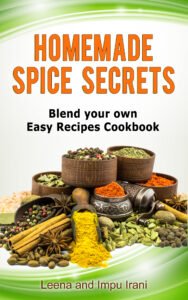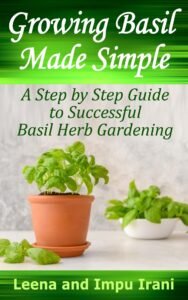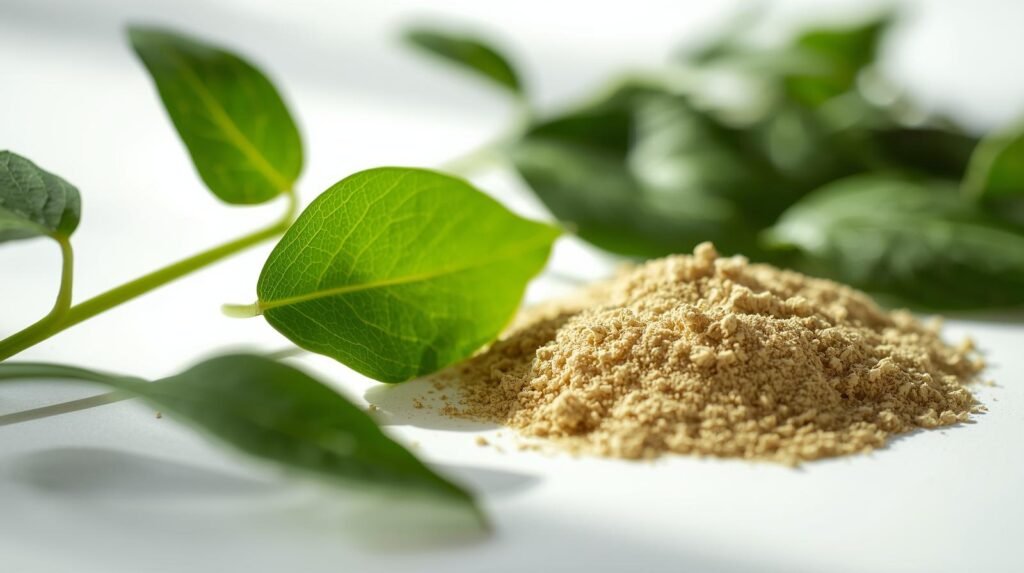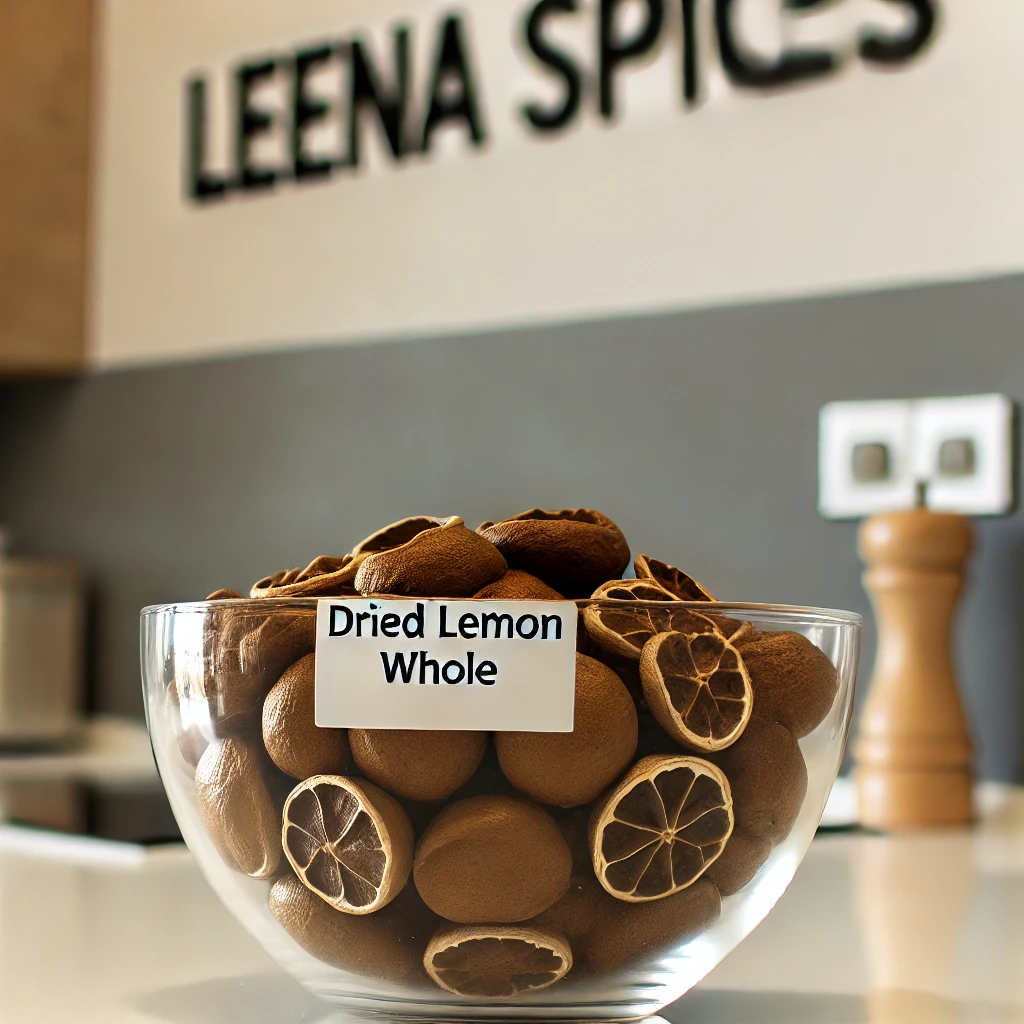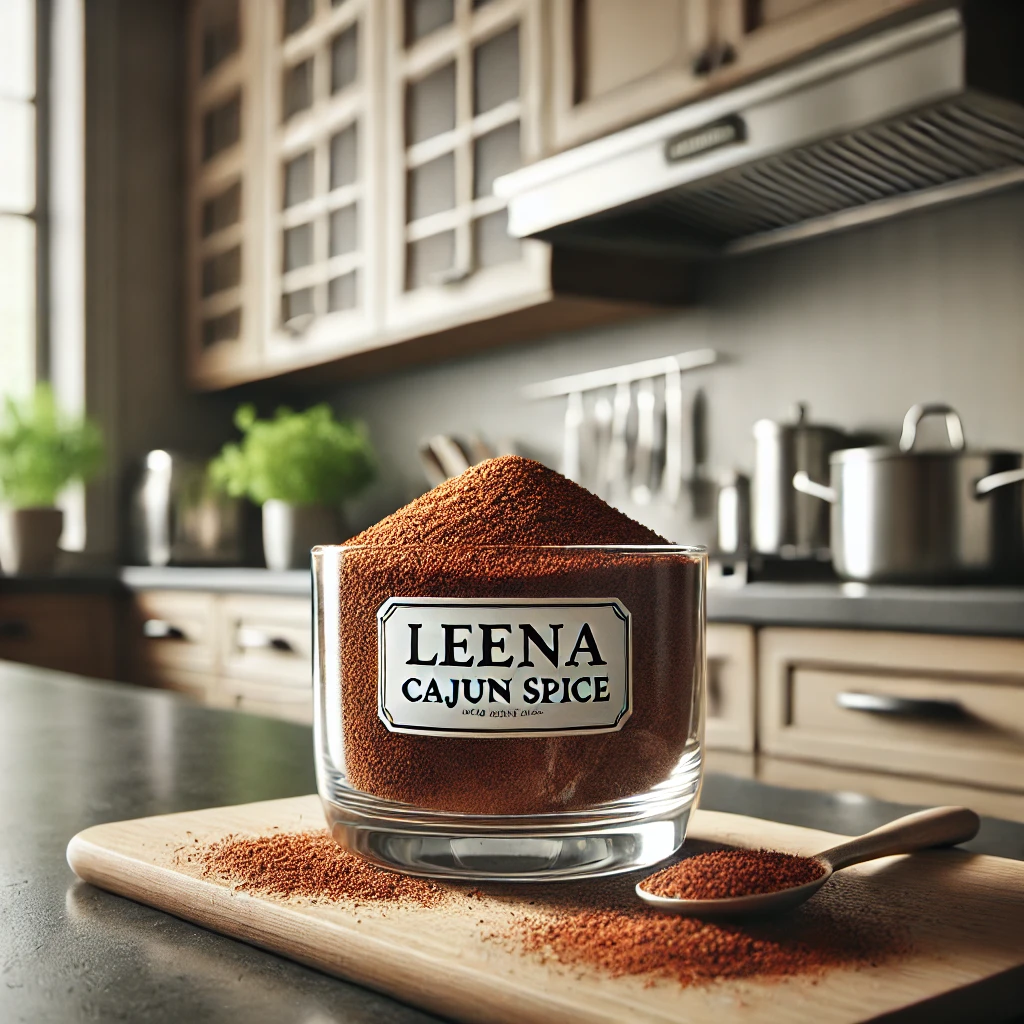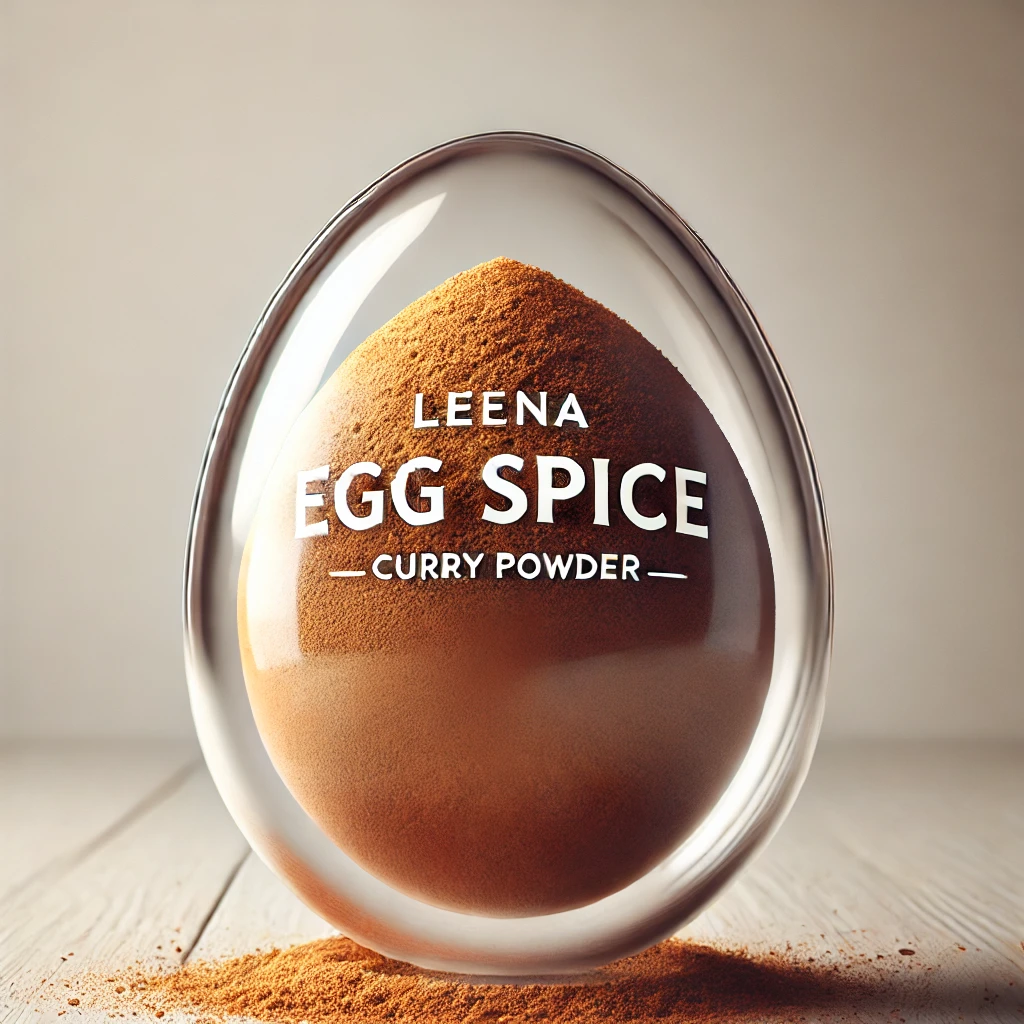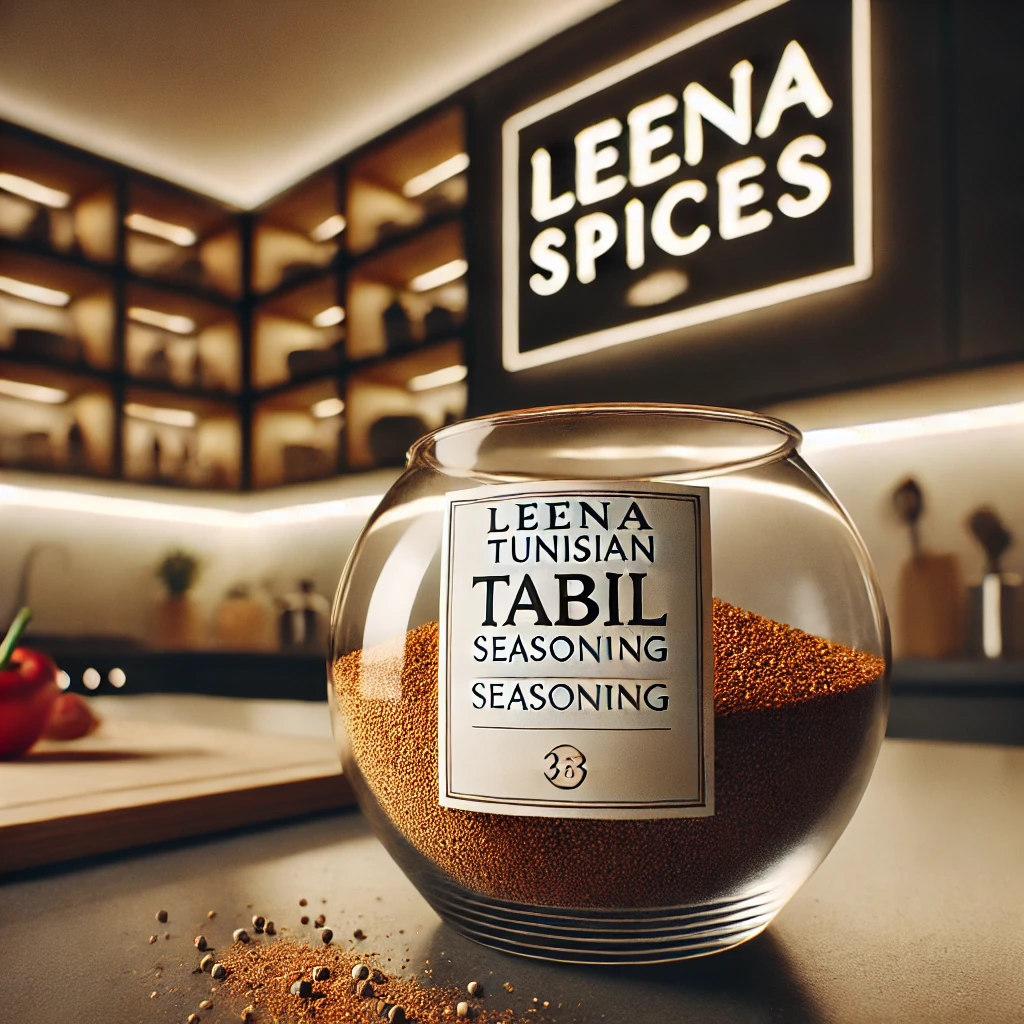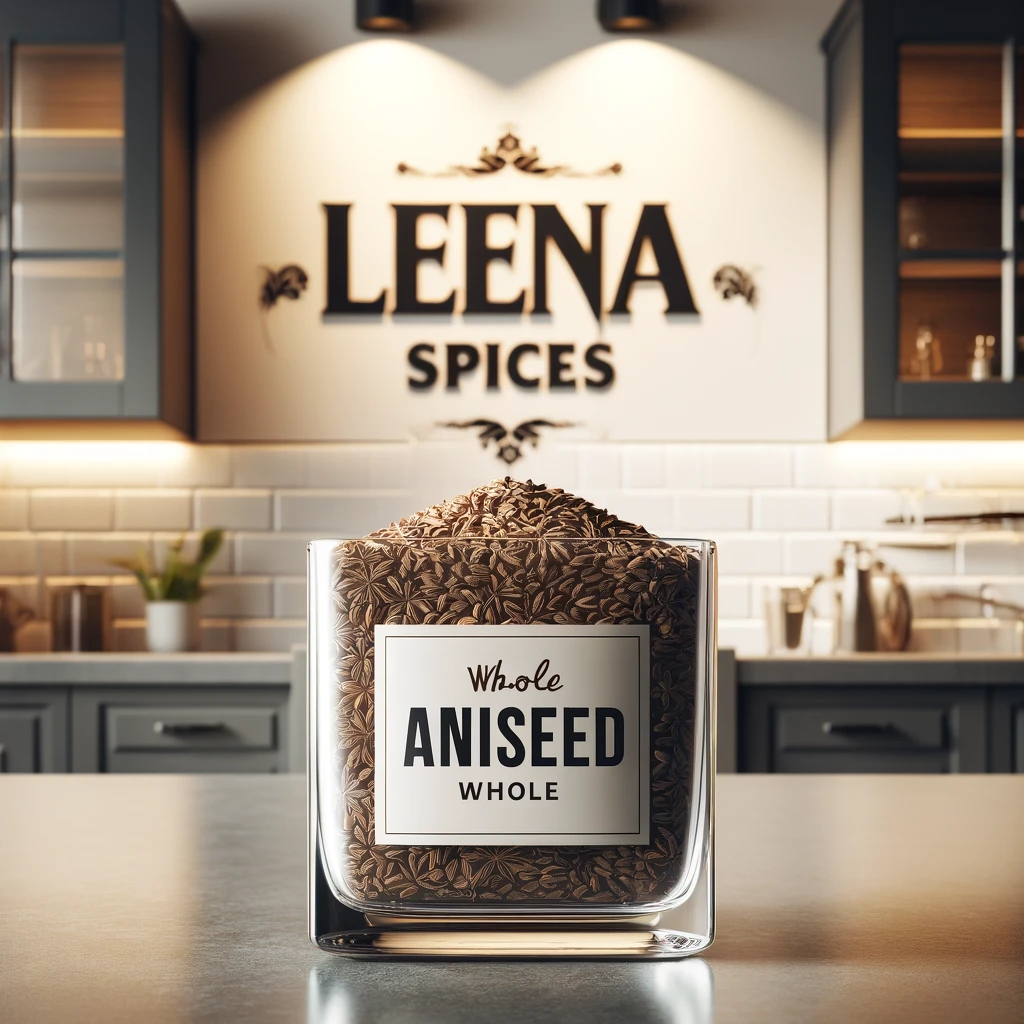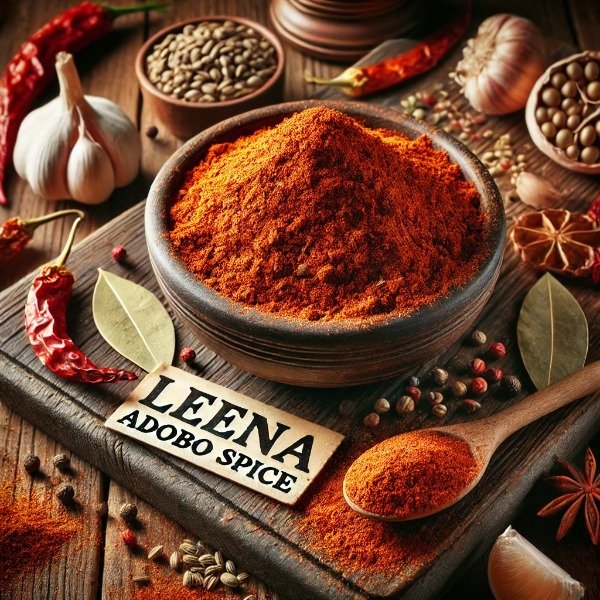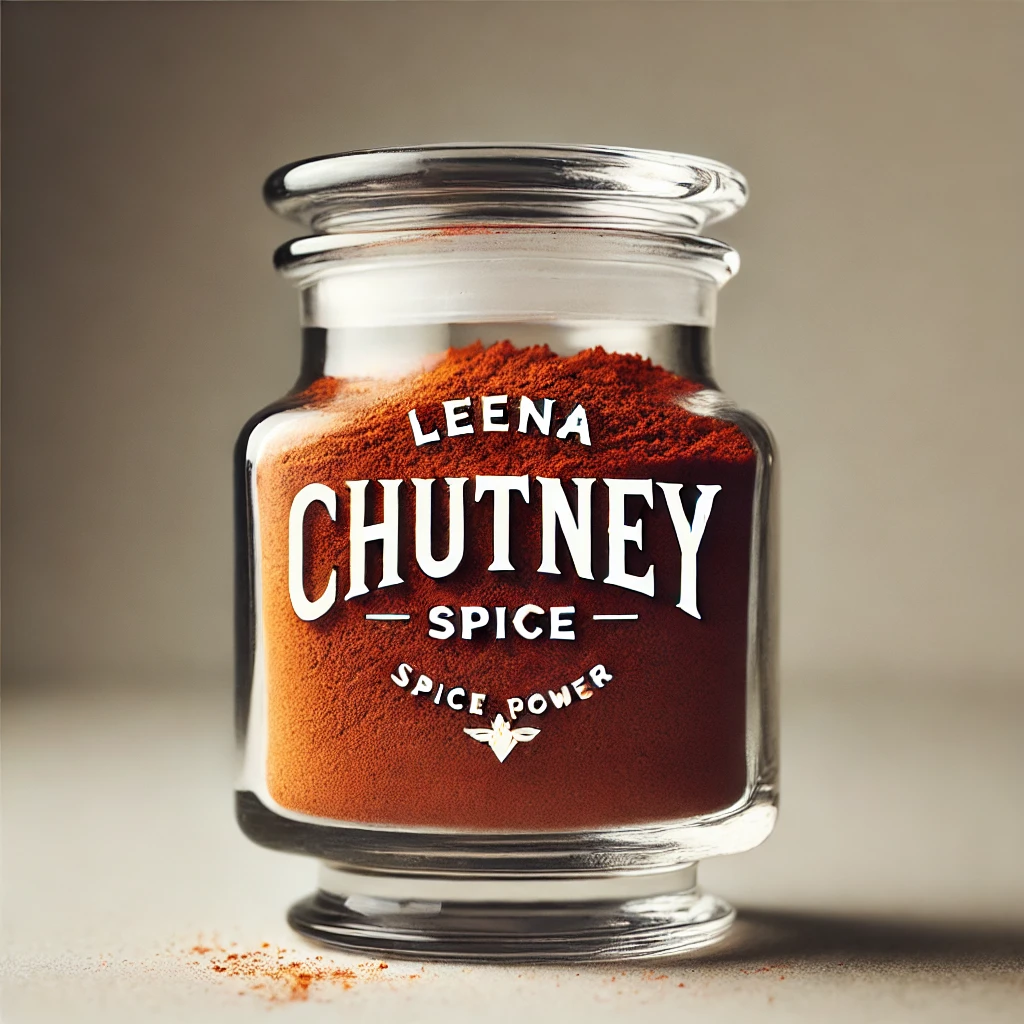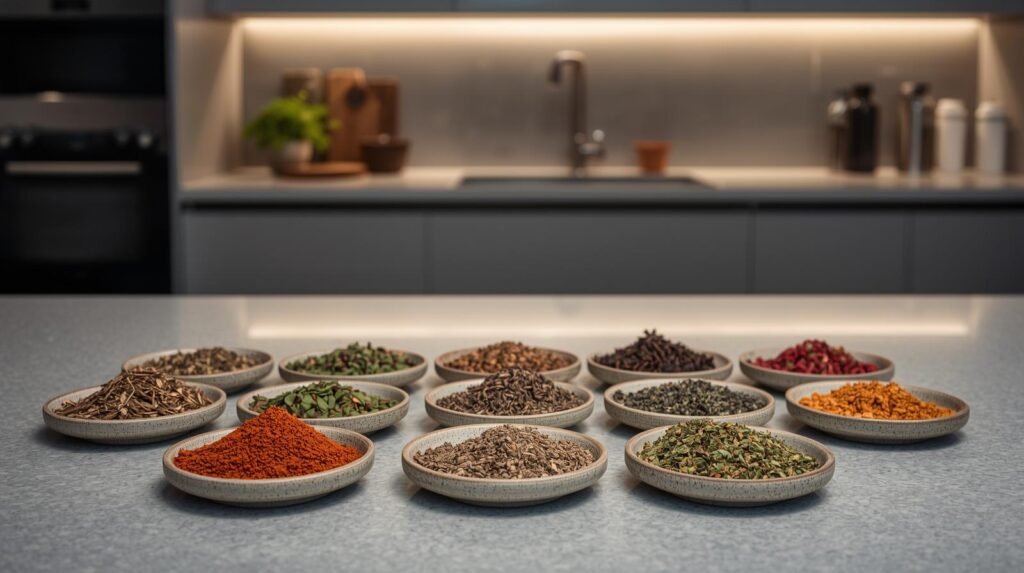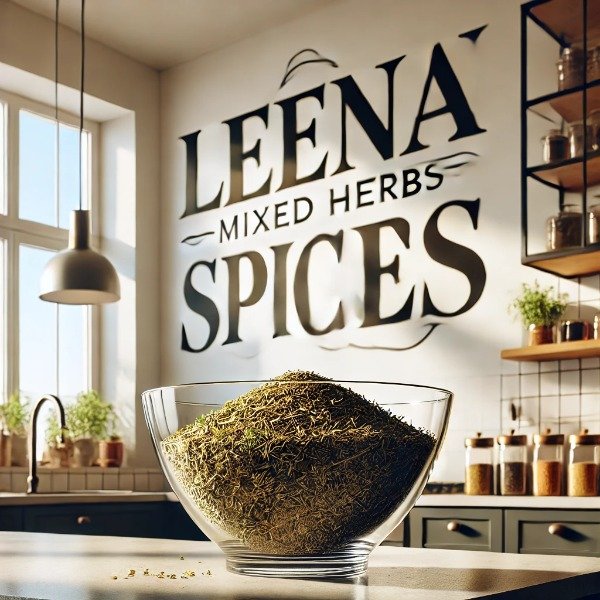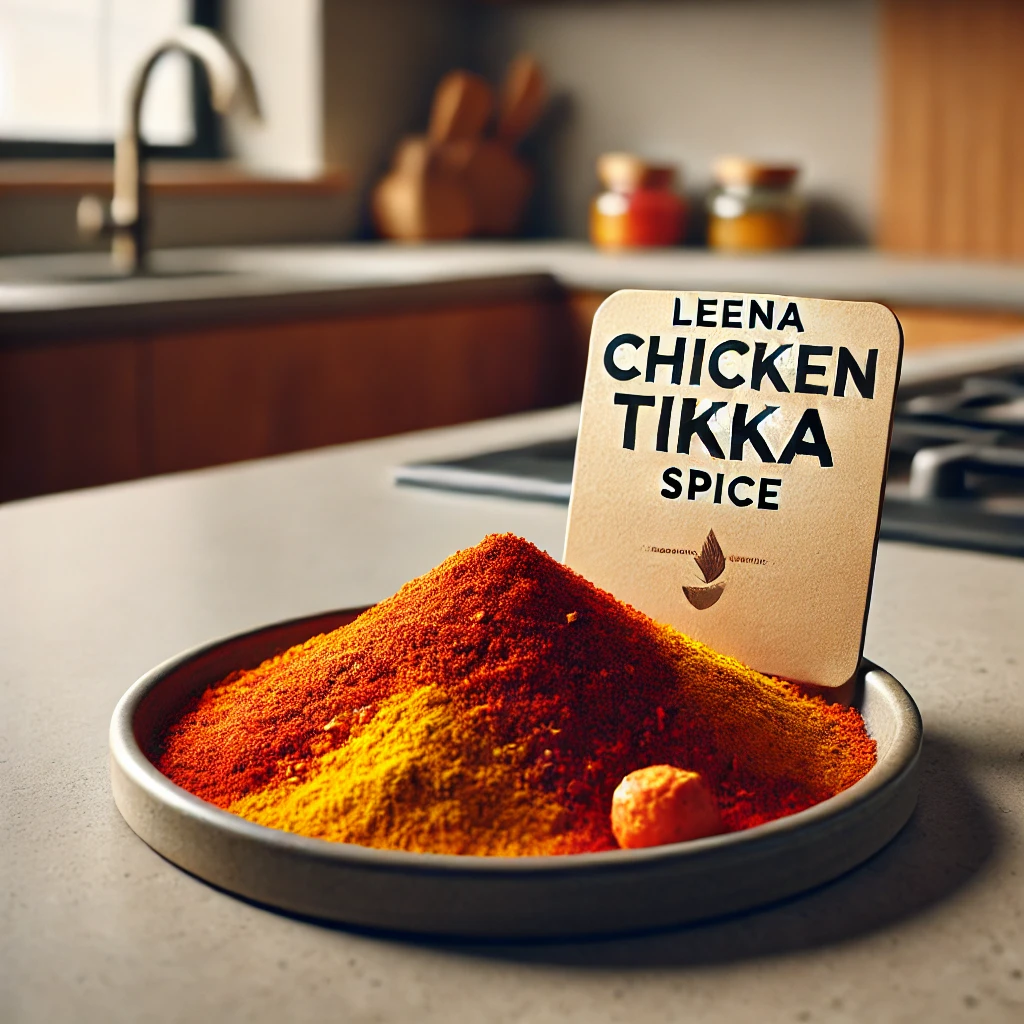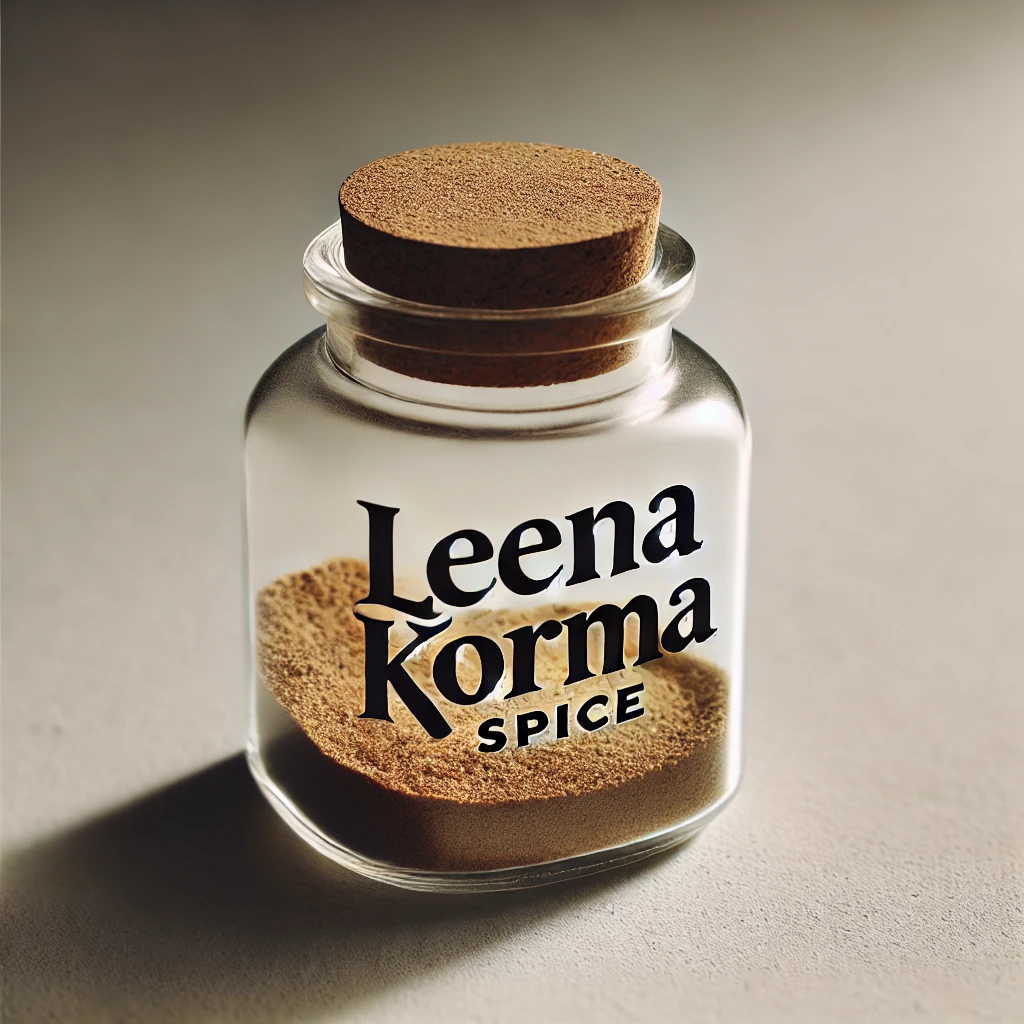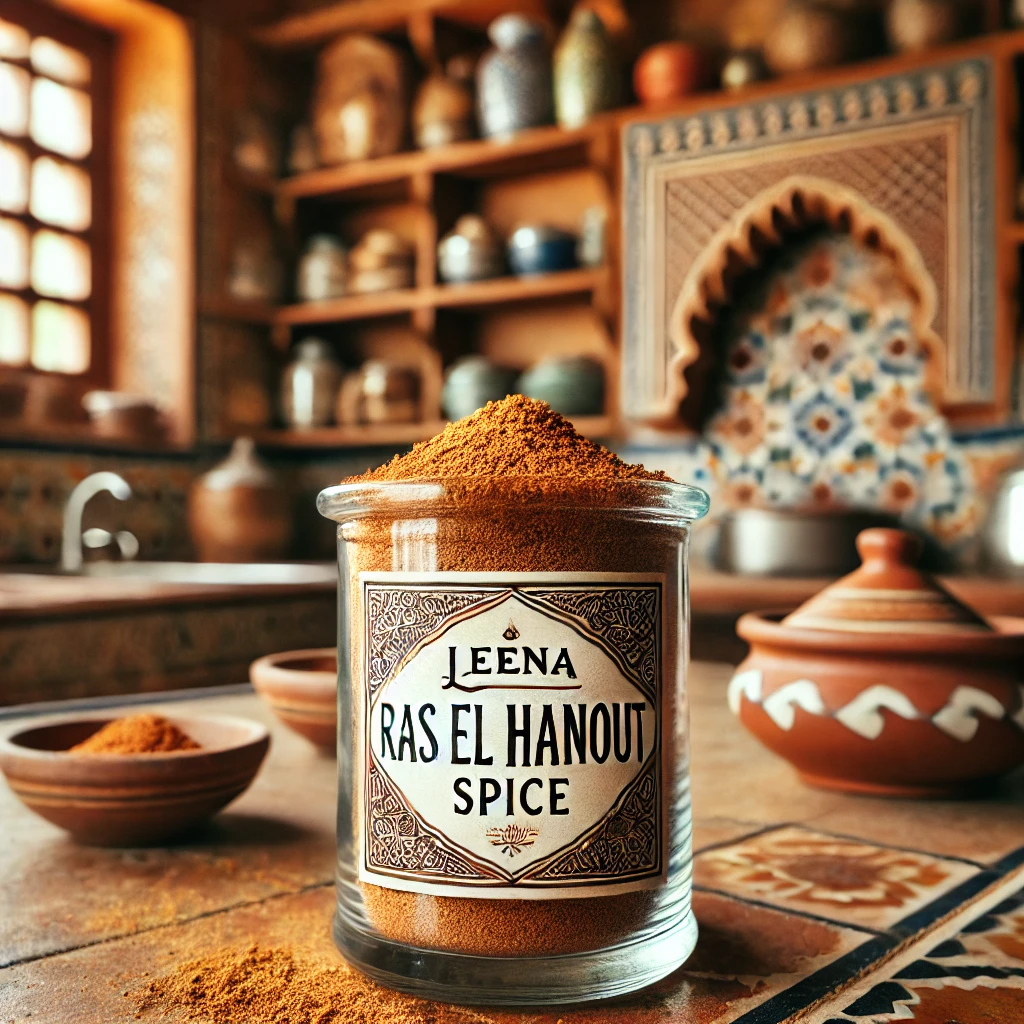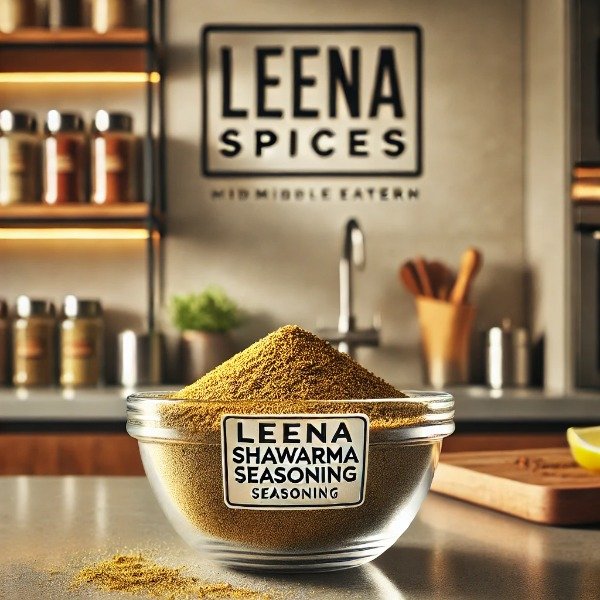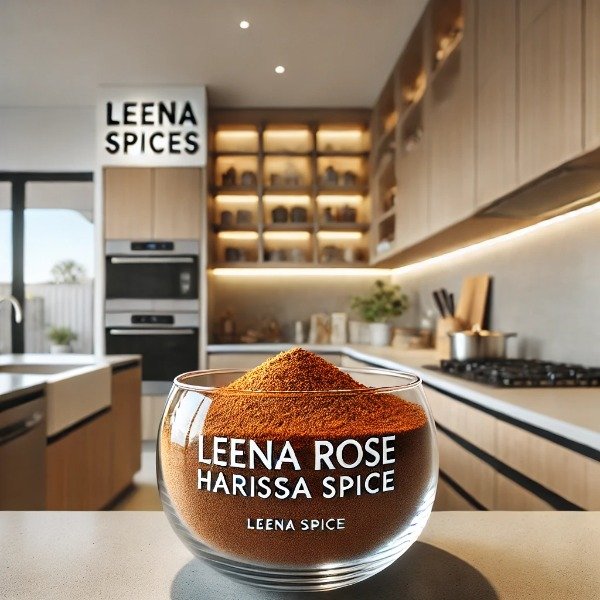How to Make the Perfect Rendang Spice Blend: A Step-by-Step Guide for Home Cooks
Key Takeaways: Rendang & Rendang Spice Blend
- Origin & Heritage:
- Rendang originates from the Minangkabau region of West Sumatra, Indonesia.
- Traditionally a ceremonial dish symbolizing wealth, hospitality, and cultural pride.
- Spread across Malaysia, Singapore, and Southeast Asia, becoming a globally recognized curry.
- Rendang Spice Blend:
- A mixture of aromatic spices and herbs such as dried chilies, galangal, lemongrass, turmeric, shallots, garlic, coriander, cumin, cinnamon, cloves, cardamom, and sometimes candlenuts.
- Provides the complex, layered flavor characteristic of authentic rendang.
- Pre-made blends simplify cooking while maintaining authenticity.
- Flavor Profile:
- Rich, savory, and aromatic with balanced layers of:
- Spicy: From dried chilies.
- Savory/Umami: From slow-cooked meat and coconut milk.
- Sweet: From palm sugar or caramelized coconut milk.
- Tangy: From tamarind or kaffir lime leaves.
- Nutty: From toasted coconut (kerisik) or candlenuts.
- Rich, savory, and aromatic with balanced layers of:
- Indonesian vs. Malaysian Rendang:
- Indonesian: Spicier, drier, tangier, often caramelized; uses galangal, turmeric, lemongrass, candlenuts, and kerisik.
- Malaysian: Milder, sweeter, saucier; uses aromatic spices like cinnamon, star anise, cloves, tamarind, and palm sugar.
- Heat Level & Adjustment:
- Typically medium heat; Indonesian rendang tends to be spicier than Malaysian.
- Adjust by using fewer or milder chilies to reduce heat, or adding hotter chilies/paste to increase it.
- Making Rendang Spice Paste:
- Blend fresh aromatics (chilies, shallots, garlic, ginger, galangal, lemongrass, turmeric) with toasted spices (coriander, cumin, cloves, cinnamon, cardamom).
- Can be used immediately or stored in the fridge (up to 1 week) or freezer (up to 3 months).
- Storage:
- Dry spice mix: Airtight container, cool, dry, dark place, up to 6–12 months.
- Paste: Refrigerate for up to 1 week or freeze in small portions for up to 3 months.
- Versatility:
- Pairs with various proteins beyond beef: chicken, lamb, goat, pork, seafood, tofu, jackfruit, and vegetables.
- Works well with rice, noodles, or bread.
- Ease of Use:
- Pre-made Rendang Spice Mix simplifies cooking, delivering consistent flavors without sourcing multiple ingredients.
- Can be turned into a paste with fresh aromatics and coconut milk for traditional rendang.
- Why Rendang Is World-Renowned:
- Slow-cooked richness, tender meat, and complex, aromatic flavors.
- Recognized globally, topping CNN’s “World’s Most Delicious Foods” polls.
- Represents a culinary masterpiece combining technique, culture, and flavor.
What is Rendang Spice Blend?
Rendang spice blend is a carefully balanced mixture of ground spices and herbs that forms the foundation of rendang, one of Southeast Asia’s most celebrated dishes. Originating from Indonesia, particularly the Minangkabau region of West Sumatra, and widely enjoyed in Malaysia and Singapore, rendang is a slow-cooked, dry-style curry traditionally prepared with beef but also adapted with chicken, lamb, or other meats.
The spice blend is what gives rendang its depth of flavor, complex aroma, and signature richness. Typical ingredients include:
- Aromatic roots and bulbs: garlic, shallots, ginger, galangal, and turmeric.
- Herbs and fresh spices: lemongrass, kaffir lime leaves, and tamarind.
- Warm spices: coriander, cumin, cinnamon, cloves, star anise, fennel, and cardamom.
- Heat and smokiness: dried chilies and black pepper.
- Flavor enhancers: toasted coconut (kerisik) and palm sugar for a nutty sweetness.
When combined with coconut milk and cooked slowly over a low flame, this blend tenderizes the meat and infuses it with a multi-layered profile, spicy, savory, slightly sweet, and aromatic with a hint of smokiness. The result is a dish that is deeply satisfying, intensely flavorful, and considered by many to be among the world’s finest curries.
Beef rendang remains the most iconic version, often served during festivals, weddings, and celebrations, but the spice blend works equally well with chicken, lamb, or even vegetarian alternatives.
Where Does Rendang Originate?
Rendang originates from West Sumatra, Indonesia, and is deeply rooted in the culinary traditions of the Minangkabau people. This dish carried cultural meaning and often symbolized wealth and honor. In earlier times, rendang was prepared with domestic buffalo meat, a luxury ingredient that highlighted prosperity.
As time passed, rendang spread beyond West Sumatra through trade, migration, and cultural exchange. It became a signature dish not only in Indonesia but also in Malaysia, Singapore, and other parts of Southeast Asia, where it remains a beloved culinary icon.
Today, rendang is considered one of the world’s greatest dishes, celebrated for its rich cultural history, slow-cooked technique, and complex layering of spices that make it both comforting and extravagant.
What is the Difference Between Indonesian and Malaysian Rendang Spice Blends?
While both Indonesian and Malaysian rendang share the same foundation their flavor profiles, ingredients, and textures differ based on regional preferences and cultural influences.
Indonesian Rendang (Minangkabau, West Sumatra):
- Spice Profile: Hotter and spicier, with a generous use of dried chilies. Fresh turmeric, galangal, lemongrass, and kaffir lime leaves add sharpness and citrusy notes.
- Ingredients: Often includes candlenuts for body, kerisik (toasted coconut) for texture, and a strong presence of coriander and cumin. Sometimes asam kandis, a local sour fruit, is added for tanginess.
- Flavor: Bold, earthy, and intensely spiced, with a balance leaning toward heat and tang.
- Texture: Traditionally very dry, as the curry is simmered for hours until the coconut milk reduces completely and the meat caramelizes in the spices.
Malaysian Rendang:
- Spice Profile: Milder and sweeter, with less emphasis on chilies. Aromatic spices like cinnamon, cloves, star anise, and fennel take center stage, reflecting stronger Indian influence.
- Ingredients: Common additions include tamarind for tang, palm or brown sugar for sweetness, and sometimes kecap manis (sweet soy sauce). Kerisik is used but less prominently than in the Indonesian version.
- Flavor: Rich, aromatic, and creamier, with a noticeable sweet-savory balance.
- Texture: Generally wetter and more sauce-like, as the dish is cooked for a shorter time than Indonesian rendang, leaving more coconut milk in the final curry.
Key Difference:
Indonesian rendang is spicier, tangier, and drier, with a deeply caramelized flavor that develops through long cooking. Malaysian rendang is sweeter, milder, and saucier, emphasizing aromatics and a creamier texture.
Indonesian vs. Malaysian Rendang Spice Blends
| Feature | Indonesian Rendang (Minangkabau, West Sumatra) | Malaysian Rendang |
| Spice Profile | Hotter, spicier; more dried chilies, turmeric, galangal, lemongrass, kaffir lime leaves | Milder, sweeter; more emphasis on aromatics like cinnamon, cloves, fennel, and star anise |
| Key Ingredients | Candlenuts, kerisik (toasted coconut), coriander, cumin, asam kandis for tanginess | Tamarind, palm or brown sugar, kerisik (less dominant), sometimes kecap manis |
| Flavor | Bold, earthy, tangy, and intensely spiced | Rich, aromatic, creamier, with a sweet-savory balance |
| Texture | Drier; coconut milk fully reduced; meat caramelized with spices | Wetter; thicker sauce consistency; cooked for a shorter time |
| Cooking Style | Long, slow cooking until curry is nearly dry | Shorter cooking, leaving more coconut milk in the sauce |
| Cultural Influence | Strongly rooted in Minangkabau tradition, showcasing bold flavors | Influenced by Indian and Malay cooking, emphasizing aromatics and sweetness |
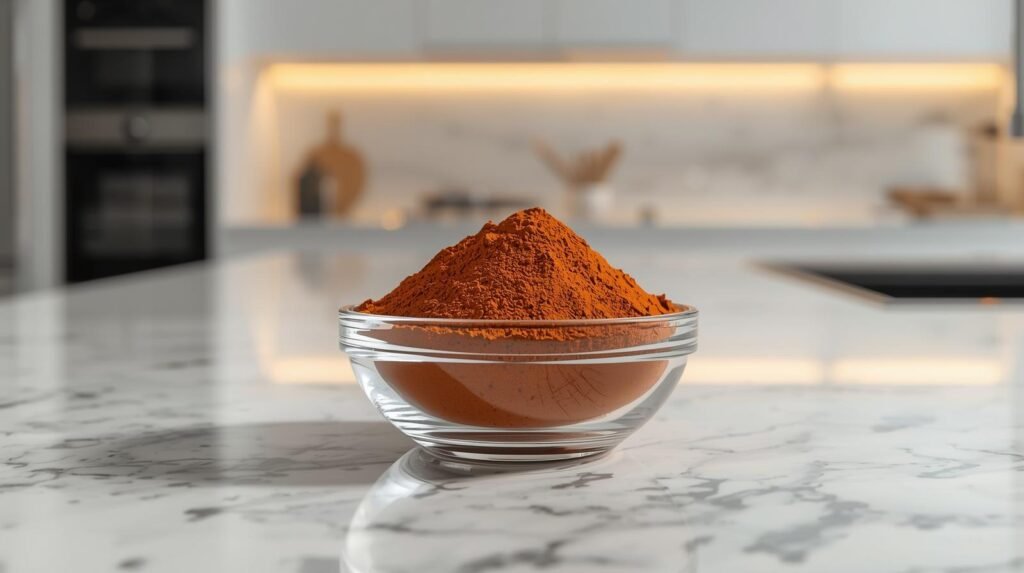
What Spices Are in a Rendang Spice Blend?
A rendang spice blend is a carefully balanced mixture of fresh aromatics and warm spices that creates the deep, layered flavors of traditional rendang. The blend combines heat, earthiness, citrus notes, sweetness, and nuttiness, all of which come together when cooked slowly with coconut milk and meat.
Key ingredients commonly found in a traditional rendang spice blend include:
- Aromatics: shallots, garlic, ginger, galangal, lemongrass, turmeric (fresh or ground)
- Chilies: dried red chilies or chili powder for heat
- Warm spices: coriander seeds, cumin seeds, cloves, cinnamon (or cassia), star anise, cardamom pods, nutmeg, fennel, and black pepper
- Richness & texture: candlenuts (or substitutes such as macadamia or cashew nuts)
- Fragrance & freshness: kaffir lime leaves (optional, for a citrusy lift)
- Enhancers: toasted coconut (kerisik) for nuttiness, palm sugar or brown sugar for balance
These ingredients are usually toasted and ground or blended into a paste. When simmered with coconut milk, they coat the meat and gradually caramelize during slow cooking, producing rendang’s signature complex, savory-sweet, aromatic, and slightly smoky profile.
The exact composition can vary depending on whether you’re preparing an Indonesian (spicier, drier) or Malaysian (milder, saucier) version, but the base always combines chilies, aromatics, and a medley of spices that make rendang unmistakably unique.
What is the Flavor Profile of Rendang?
The flavor profile of rendang is rich, layered, and deeply complex, shaped by its unique combination of spices, aromatics, and long, slow cooking. Each element plays a role, and together they create one of the most celebrated flavors in Southeast Asian cuisine.
Key characteristics of rendang’s flavor profile include:
- Savory & Umami: From the slow-cooked meat (commonly beef) and coconut milk, which develop a deep, meaty richness as they simmer together.
- Spicy: Dried red chilies provide heat, ranging from mild to moderate. Indonesian rendang tends to be spicier, while Malaysian rendang is generally milder.
- Aromatic & Earthy: Fresh ingredients such as lemongrass, galangal, turmeric, ginger, and garlic, combined with ground spices like coriander, cumin, cinnamon, and star anise, give rendang its signature fragrance.
- Sweet: Palm sugar or brown sugar (more common in Malaysian rendang) balances the spices with a gentle sweetness. Caramelization of coconut milk during long cooking also adds natural sweetness.
- Tangy & Bright: Tamarind, kaffir lime leaves, or lime zest introduce a subtle sourness that cuts through the richness.
- Nutty & Toasted: Toasted coconut (kerisik) and sometimes candlenuts add depth, texture, and a slightly nutty undertone.
- Smoky & Caramelized: Slow cooking over low heat allows the flavors to intensify, leaving a lightly smoky, caramelized finish as the sauce thickens and clings to the meat.
Overall Experience:
Rendang is savory, aromatic, and warming, with layers of spice and a creamy texture from coconut milk. The long cooking process ensures every bite is infused with flavor, making rendang both comforting and intensely satisfying.
How Spicy Is a Typical Rendang Spice Blend, and How Can You Adjust the Heat?
A typical rendang spice blend is moderately spicy, with heat coming mainly from dried red chilies. The intensity can vary by region—Indonesian rendang is usually spicier, while Malaysian rendang tends to be a little milder and sweeter. Instead of a sharp burn, the heat is more of a warm, lingering spiciness, balanced by creamy coconut milk, aromatic herbs, and a touch of sweetness.
How to Adjust the Heat
- To Reduce Heat:
- Use fewer chilies, or choose milder varieties such as cayenne or Kashmiri red chilies.
- Remove chili seeds before blending to cut back on the burn.
- Balance the dish with extra coconut milk, coconut cream, or a touch of palm sugar to soften the spice level.
- To Increase Heat:
- Add extra dried or fresh chilies to the spice paste.
- Use hotter chili varieties (like bird’s eye chilies or Thai chilies).
- Stir in chili powder or a spoonful of sambal during cooking for an added kick.
Tip: Because rendang is slow-cooked, the long simmering time naturally mellows chili heat, creating a rounded warmth instead of overwhelming spiciness. This makes it easier to adjust the spice level to personal taste without losing the dish’s signature balance.
How to Make Rendang Spice Paste from Scratch
Making rendang spice paste from scratch allows you to capture the authentic aroma and depth of this iconic Southeast Asian dish. The paste combines fresh aromatics with toasted spices to create the rich, layered flavors essential for slow-cooked rendang.
Ingredients
Fresh aromatics:
- 10–15 dried red chilies (soaked in hot water for 20 minutes; deseed for less heat)
- 2 stalks lemongrass (white part only, chopped)
- 2-inch piece galangal, peeled and chopped
- 1-inch piece ginger, peeled and chopped
- 1-inch piece turmeric, peeled (or 1 tsp ground turmeric)
- 4–5 shallots
- 3–4 garlic cloves
Spices and nuts:
- 1 tsp coriander seeds
- 1 tsp cumin seeds
- 2–3 candlenuts or macadamia nuts (optional, for richness)
- 1/2 tsp ground cinnamon
- 2 cloves
- 1 cardamom pod (seeds only)
- 1 star anise (optional)
Other:
- 1–2 tbsp water or a little oil (to help blend)
Instructions
- Toast the Spices:
- Dry-toast coriander seeds, cumin seeds, cloves, and star anise (if using) in a pan over medium heat for 1–2 minutes until fragrant. Let them cool slightly.
- Prepare the Paste:
- In a blender, food processor, or mortar and pestle, combine: soaked chilies, lemongrass, galangal, ginger, turmeric, shallots, garlic, candlenuts, toasted spices, cinnamon, and cardamom seeds.
- Add 1–2 tablespoons of water (or a little oil) to help form a smooth paste.
- Blend to Desired Consistency:
- Blend until smooth, or leave slightly coarse for texture. Adjust water sparingly if needed.
- Optional Sauté (for deeper aroma):
- Heat a little vegetable oil in a pan over medium-low heat.
- Sauté the paste, stirring constantly, until fragrant and the oil separates from the paste (“pecah minyak”).
- Store or Use:
- Use immediately as the aromatic base for your rendang.
- Store in an airtight container in the fridge for up to 1 week, or freeze for up to 3 months.
Yield: Approximately 1/2 to 3/4 cup paste, enough for 1–1.5 kg of meat.
This spice paste forms the heart of rendang, delivering the complex, aromatic, and slightly
What Makes the Rendang Spice Mix Powder Special?
The Rendang Spice Mix Powder is carefully crafted to bring the authentic, complex flavors of traditional rendang into home kitchens with ease. It combines a wide range of aromatic spices and dehydrated aromatics, making it convenient while preserving the depth and richness of the original dish.
Key Features that Make It Special:
- Complex, Layered Flavor: The blend includes spices such as turmeric, coriander, cumin, cinnamon, cloves, cardamom, star anise, dried chilies, garlic, and ginger. Optional additions like candlenuts or fenugreek enhance nutty richness and subtle warmth, creating the signature multi-layered taste of rendang.
- Cultural Authenticity: Inspired by the Minangkabau heritage of West Sumatra, the spice mix captures the traditional flavors used in slow-cooked rendang, reflecting its aromatic, slightly sweet, and deeply caramelized character.
- Versatility: While perfect for beef rendang, it can also be used with chicken, lamb, seafood, or even vegetarian dishes, adapting easily to a variety of recipes.
- Convenience: Pre-ground and pre-measured, the powder eliminates the need to source and prep multiple fresh spices. It can also be converted into a fresh spice paste by combining with onions, garlic, or water, saving time while maintaining authenticity.
- Enhances Texture and Aroma: When used with ingredients like kerisik (toasted coconut), the blend adds a concentrated, nutty depth and fragrant aroma that distinguishes rendang from other curries.
- Long Shelf Life: Stored in an airtight container in a cool, dry place, the powder remains potent for 6–12 months, making it a reliable pantry staple for authentic rendang anytime.
In essence, the Rendang Spice Mix Powder delivers restaurant-quality flavor, traditional authenticity, and effortless convenience, allowing home cooks to recreate the legendary taste of Minangkabau-style rendang without the complexity of sourcing and preparing multiple spices.
How Do You Store Rendang Spice Blend? How Long Does it Last?
The shelf life of rendang spice blend depends on whether it is made from ground spices, whole spices, or a prepared paste. Proper storage is key to preserving freshness, aroma, and flavor.
- Dry spice blend (ground): When stored in an airtight container in a cool, dark, and dry place, ground rendang spice blends generally last 6 to 12 months before they begin to lose potency. For best flavor, try to use them within 6 months.
- Whole spices: Whole versions of the same spices (like coriander seeds, cloves, or star anise) can last much longer—2 to 3 years—and stay fresher if ground just before use.
- Prepared spice pastes or seasoning mixes: Commercially packed rendang pastes usually come with a “best before” date. Once opened, they should be refrigerated and ideally used within 2 to 4 weeks to maintain flavor and food safety.
Storage Tips:
- Always keep the spice blend in an airtight container.
- Store away from heat, light, and moisture (avoid keeping it near the stove).
- For extended freshness, refrigeration can help once a pack is opened, but always bring the blend to room temperature before use to prevent clumping.
Bottom line: A dry rendang spice blend can stay safe for up to 1–2 years, but its flavor and aroma are at their best within the first 6 months.
Can You Use Rendang Spice Blend for Things Other Than Beef?
Absolutely. While rendang is traditionally made with beef, the spice blend is versatile and enhances a variety of proteins and vegetables. Its rich, aromatic, and mildly spicy flavor adapts well to different ingredients.
Common Alternatives:
- Chicken: Popular in Malaysian rendang; cooks quickly and absorbs the spice flavors beautifully.
- Lamb or Goat: Works well with longer cooking times to develop tender, flavorful meat.
- Pork or Venison: Adds a unique depth when slow-cooked with the spices.
- Seafood: Shrimp or firm fish can be cooked lightly with the paste for a rendang-style curry.
- Vegetarian/Vegan Options: Tofu, tempeh, jackfruit, eggplant, or root vegetables like potatoes take on the spice’s aromatic richness.
- Eggs: Hard-boiled eggs simmered in the spice paste make a flavorful, protein-packed dish.
Tip: Adjust cooking time, coconut milk, and liquid levels to suit the texture of each ingredient. For quicker-cooking proteins or vegetables, reduce simmering time to prevent overcooking while still infusing the flavors.
Why Is Rendang Considered One of the Best Curries in the World?
Rendang’s reputation as one of the world’s finest curries comes from its extraordinary depth of flavor, tender texture, and cultural significance. Slow-cooked with a carefully balanced blend of spices, it transforms simple ingredients like meat and coconut milk into a rich, aromatic, and unforgettable dish.
Key Reasons Rendang Stands Out:
- Complex, Layered Flavors:
The spice blend of lemongrass, galangal, ginger, turmeric, garlic, chilies, coriander, cumin, cinnamon, cloves, and cardamom creates multiple layers of flavor—spicy, savory, slightly sweet, tangy, and nutty. Slow simmering allows these flavors to meld and intensify, producing a deeply aromatic and harmonious taste. - Tender, Melt-in-the-Mouth Texture:
The long, slow-cooking process breaks down even tougher cuts of meat, allowing them to absorb the spice paste fully. Toasted coconut (kerisik) adds a nutty richness, resulting in a tender, dense, and flavorful curry. - Unique Cooking Method:
Unlike typical wet curries, rendang is often cooked “dry,” with the sauce reducing slowly until it caramelizes and clings to the meat. This technique concentrates flavors, tenderizes the meat, and produces a rich, luscious coating that sets it apart from other curries. - Cultural and Historical Significance:
Originating from the Minangkabau people of West Sumatra, Indonesia, rendang was historically prepared for ceremonial occasions and long journeys due to its durability. It symbolizes patience, hospitality, and tradition in Minangkabau and Malay cultures. - Global Recognition:
Rendang’s excellence has been recognized internationally, topping CNN Travel’s polls in 2011 and 2017 as the “World’s Most Delicious Food.” Its balanced flavors, aromatic richness, and distinctive cooking method have earned it acclaim from food lovers worldwide.
In essence, rendang is celebrated not just for its taste but for the artful combination of spices, cooking technique, and cultural heritage that make each bite an experience—tender, aromatic, and deeply satisfying.
Is Rendang Spice Mix Easy to Use?
Yes. Rendang Spice Mix is designed to simplify the cooking process while delivering the rich, authentic flavors of traditional rendang. It takes the guesswork out of blending multiple spices, ensuring consistent results every time.
How to Use Rendang Spice Mix:
- For Dry Powder:
- Mix the spice blend with a little oil, fresh aromatics (like garlic, shallots, or lemongrass), and coconut milk to form a paste.
- Sauté the paste until fragrant, then add meat or other proteins.
- Simmer slowly until the sauce thickens and the flavors meld.
- For Pre-Made Paste:
- Sauté directly in oil, then add coconut milk and meat.
- Simmer for 1–4 hours (depending on the type of meat) to develop deep, rich flavors.
Benefits:
- Eliminates the need to source, toast, and grind multiple spices.
- Ensures a balanced, authentic flavor with minimal effort.
- Makes traditional rendang accessible for home cooks, requiring only basic kitchen tools and patience for slow cooking.
In short, Rendang Spice Mix lets you create restaurant-quality rendang at home without the complexity of preparing individual spices from scratch.
How Does Rendang Spice Mix Pair with Different Meats?
Rendang Spice Mix is versatile, bringing rich, aromatic, and slightly sweet flavors that enhance the natural taste and texture of a variety of proteins. Here’s how it complements different meats:
- Beef:
The traditional choice for rendang. The spice blend’s bold flavors—turmeric, chilies, lemongrass, galangal—tenderize tougher cuts like chuck or shank through slow cooking, creating a rich, caramelized taste with nutty depth from toasted coconut (kerisik). Cooking time: 3–4 hours for optimal tenderness. - Chicken:
Perfect for lighter flavors. Aromatic notes from the spice mix add depth without overpowering the meat. Thighs or drumsticks absorb the spices well, producing a rich, savory dish. Cooking time: 1–2 hours. - Lamb or Goat:
The mix’s intense spices (coriander, cumin, chilies) balance the bold, gamey flavor of lamb or goat. Slow cooking mellows the richness, complemented by hints of kaffir lime or tamarind. Cooking time: 3–4 hours. - Pork:
Although less traditional, pork’s natural sweetness pairs beautifully with the aromatic, subtly sweet notes of the spice mix, especially when slow-cooked. Shoulder or belly cuts work best. Cooking time: 2–3 hours. - Seafood (Fish or Shrimp):
The lighter aromatics like lemongrass and ginger enhance delicate seafood without overwhelming it. Use firm fish or quick-cook shrimp and reduce cooking time to 20–30 minutes to prevent overcooking.
Tips for Best Results:
- Adjust chili levels and coconut milk to balance heat and richness.
- Simmer slowly to allow the flavors to meld and the meat to become tender.
- All versions pair beautifully with rice, noodles, or bread, making rendang a versatile main dish for any meal.
Rendang Spice Blend FAQ
What is Rendang?
Rendang is a traditional slow-cooked meat curry from West Sumatra, Indonesia. It is made with meat (usually beef) simmered in coconut milk and a rich blend of aromatic spices, creating a tender, flavorful dish with a thick, caramelized coating.
Where does Rendang originate?
Rendang originates from the Minangkabau people of West Sumatra, Indonesia. It was historically prepared during ceremonies and special feasts and later spread across Malaysia, Singapore, and other parts of Southeast Asia.
What is Rendang Spice Blend?
Rendang spice blend is a mixture of ground spices and aromatics designed to replicate the authentic flavor of rendang. Common ingredients include chilies, shallots, garlic, ginger, galangal, lemongrass, turmeric, coriander, cumin, candlenuts, cinnamon, cloves, cardamom, star anise, and toasted coconut.
What spices are in a Rendang Spice Blend?
Key ingredients typically include:
- Shallots, garlic, ginger, galangal, lemongrass, turmeric
- Dried red chilies or chili powder
- Coriander seeds, cumin seeds
- Cloves, cinnamon stick, cardamom pods, star anise
- Candlenuts or macadamia nuts (optional)
- Kaffir lime leaves, toasted coconut, palm sugar
What is the flavor profile of Rendang?
Rendang is rich, complex, and aromatic, with:
- Spicy: From dried chilies
- Savory/Umami: From slow-cooked meat and coconut milk
- Sweet: Subtle palm sugar or caramelized coconut milk
- Tangy: Kaffir lime leaves or tamarind
- Nutty: Toasted coconut or candlenuts
How spicy is Rendang, and how can I adjust the heat?
- Typically moderately spicy; Indonesian rendang is hotter than Malaysian.
- To reduce heat: Use fewer or milder chilies, remove seeds, or add coconut milk/sugar.
- To increase heat: Add more dried/fresh chilies or chili paste.
How do I make Rendang Spice Paste from scratch?
- Soak 12–15 dried red chilies, deseed if desired.
- Toast whole spices (coriander, cumin, cloves, star anise).
- Blend soaked chilies, aromatics (lemongrass, galangal, ginger, turmeric, shallots, garlic), candlenuts, and toasted spices into a smooth or slightly coarse paste.
- Use immediately or store in the fridge for up to 1 week, or freeze for 3 months.
How do I store Rendang Spice Blend?
- Dry mix: Airtight container in a cool, dry, dark place for 6–12 months.
- Paste: Refrigerate up to 1 week, or freeze in portions for up to 3 months.
Can I use Rendang Spice Blend for meats other than beef?
Yes! It pairs well with:
- Chicken
- Lamb or goat
- Pork
- Seafood (firm fish or shrimp)
- Vegetarian options like tofu, tempeh, jackfruit, or root vegetables
Adjust cooking time and coconut milk for the type of protein.
What makes Rendang Spice Mix special?
- Combines a complex mix of aromatic spices for authentic taste
- Preserves the traditional Minangkabau flavor
- Easy to use for home cooks; can be made into a paste
- Adds nutty, aromatic depth to meats and other ingredients
- Long shelf life when stored properly
Why is Rendang considered one of the best curries in the world?
- Complex flavor profile: layers of spicy, savory, sweet, tangy, and nutty notes
- Tender, melt-in-the-mouth texture from slow-cooked meat
- Cultural significance: ceremonial dish symbolizing tradition and hospitality
- Recognized globally: Ranked the world’s most delicious food by CNN in 2011 and 2017
Is Rendang Spice Mix easy to use?
Yes. Pre-made blends simplify the process:
- Mix powder with water or coconut milk to form a paste, then sauté and simmer
- Paste can be sautéed directly with meat and coconut milk
- Requires basic cooking skills and patience for slow simmering
How does Rendang Spice Mix pair with different meats?
- Beef: Traditional choice, long simmering enhances flavor
- Chicken: Lighter flavor; absorbs spices without overpowering
- Lamb/Goat: Complements gamey meat with bold aromatics
- Pork: Adds depth and richness, works with slow cooking
- Seafood: Lighter aromatics enhance firm fish or shrimp
Key Takeaways:
- Rendang is an iconic Indonesian dish with deep, layered flavors.
- The spice blend combines aromatic herbs, spices, and optional nuts for authenticity.
- Suitable for various meats and vegetarian alternatives.
- Easy to use and store, with long shelf life for both powder and paste.
- Celebrated worldwide for flavor, texture, and cultural significance.
Conclusion
Rendang is a culinary masterpiece that embodies the rich heritage of Indonesian and Southeast Asian cuisine. The magic lies in its slow-cooked, aromatic spices, which create layers of flavor that are simultaneously savory, spicy, sweet, and nutty. With a carefully crafted rendang spice blend, you can recreate this iconic dish at home with ease, whether using beef, chicken, lamb, seafood, or even vegetarian alternatives.
Using a pre-made spice mix saves time without compromising authenticity, delivering the same depth of flavor and aromatic complexity that has made rendang famous worldwide. From its cultural significance to its tender, melt-in-the-mouth texture, rendang is a dish that delights the senses and elevates any meal. With the right spice blend and a little patience, anyone can experience the unforgettable taste of this celebrated culinary treasure in their own kitchen.
